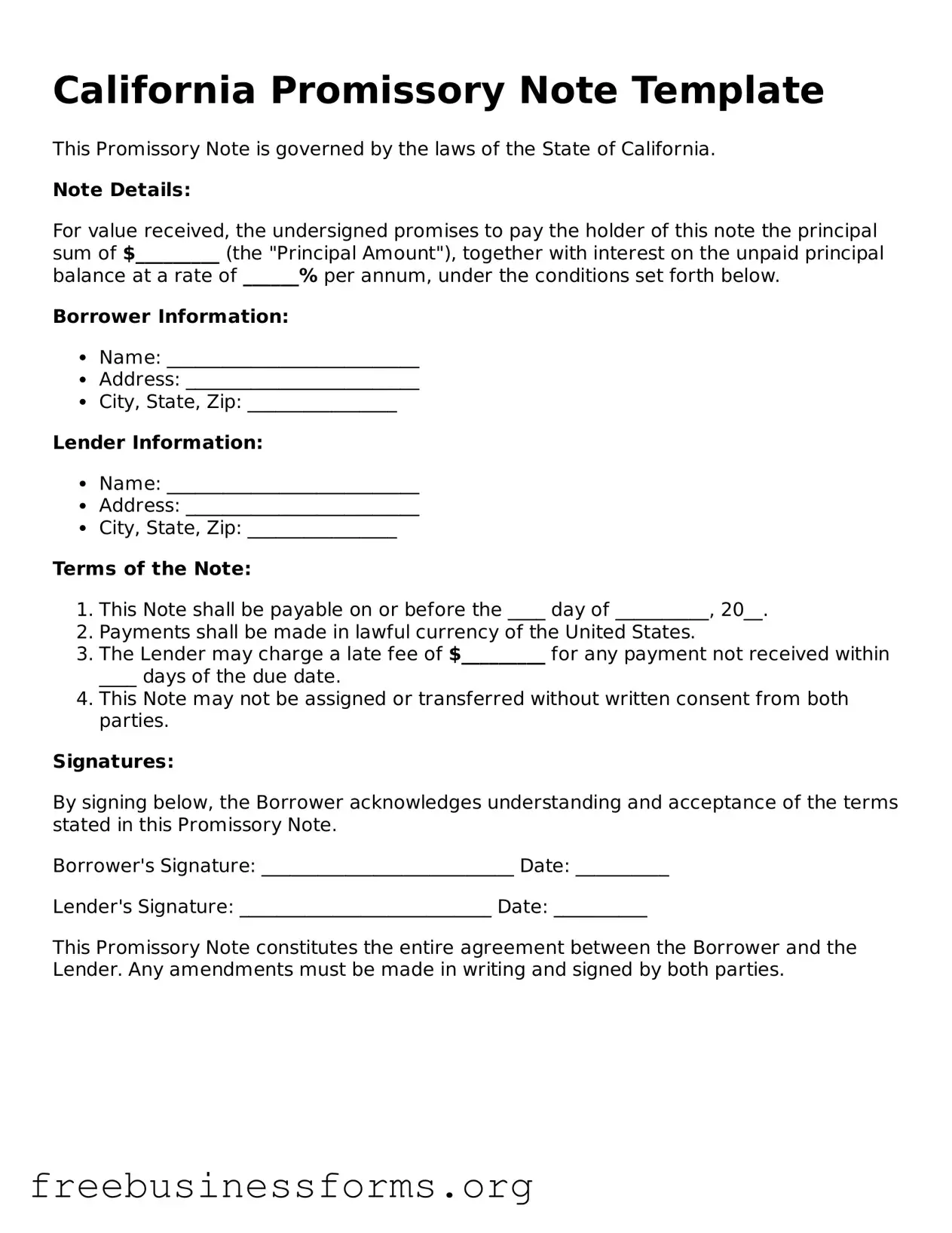California Promissory Note Template
This Promissory Note is governed by the laws of the State of California.
Note Details:
For value received, the undersigned promises to pay the holder of this note the principal sum of $_________ (the "Principal Amount"), together with interest on the unpaid principal balance at a rate of ______% per annum, under the conditions set forth below.
Borrower Information:
- Name: ___________________________
- Address: _________________________
- City, State, Zip: ________________
Lender Information:
- Name: ___________________________
- Address: _________________________
- City, State, Zip: ________________
Terms of the Note:
- This Note shall be payable on or before the ____ day of __________, 20__.
- Payments shall be made in lawful currency of the United States.
- The Lender may charge a late fee of $_________ for any payment not received within ____ days of the due date.
- This Note may not be assigned or transferred without written consent from both parties.
Signatures:
By signing below, the Borrower acknowledges understanding and acceptance of the terms stated in this Promissory Note.
Borrower's Signature: ___________________________ Date: __________
Lender's Signature: ___________________________ Date: __________
This Promissory Note constitutes the entire agreement between the Borrower and the Lender. Any amendments must be made in writing and signed by both parties.
